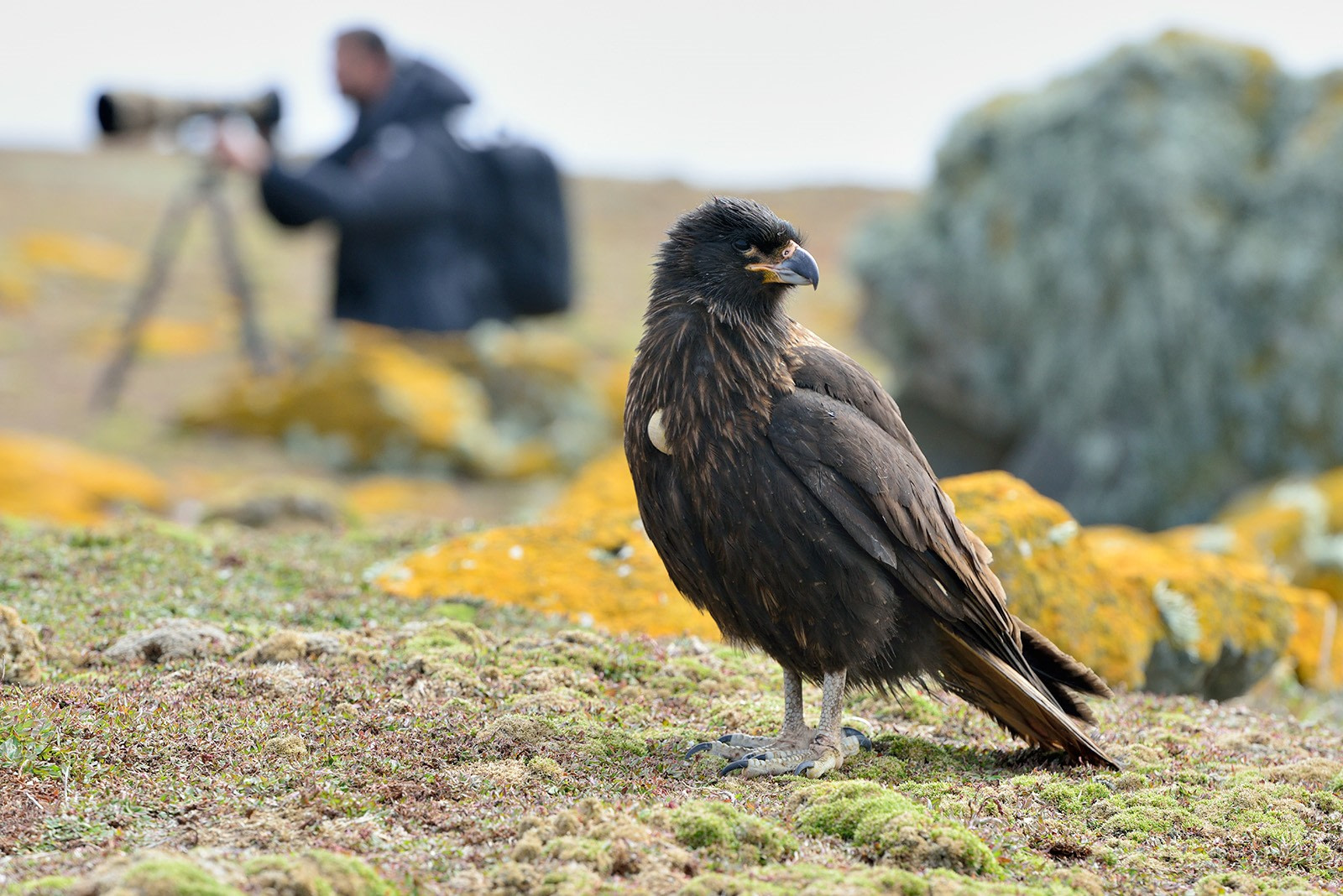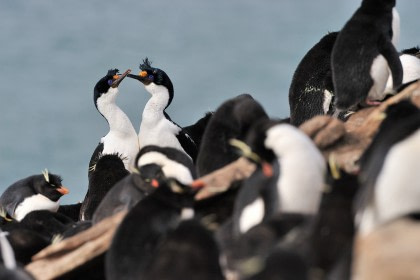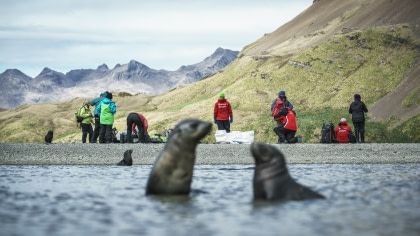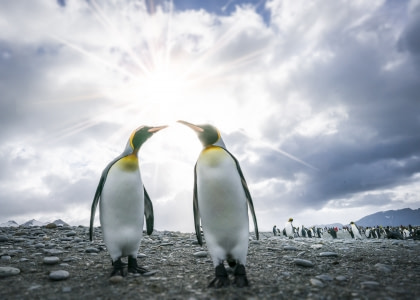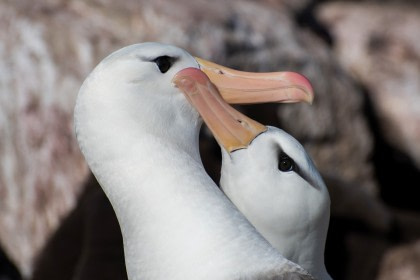Name: Striated Carcara, Johnny Rook, Caracara Austral, Matamico Estriado, Matamico Grande, Tiuque Cordillerano Austral. (Phalcoboenus australis)
Length: 60 cm.
Weight: 1.2 kg
Location: Falklands, Tierra del Fuego.
Conservation status: Near Threatened.
Diet: Carrion, offal, food scraps, insects, worms, lambs, small seabirds, eggs and young of larger seabirds.
Appearance: Eagle-like, dark brown plumage, grey-yellow legs and talons. White tips around neck, back of head, and tips of tail feathers. Yellow patches around bottom of eye and rear of beak. Hooked grey bill.
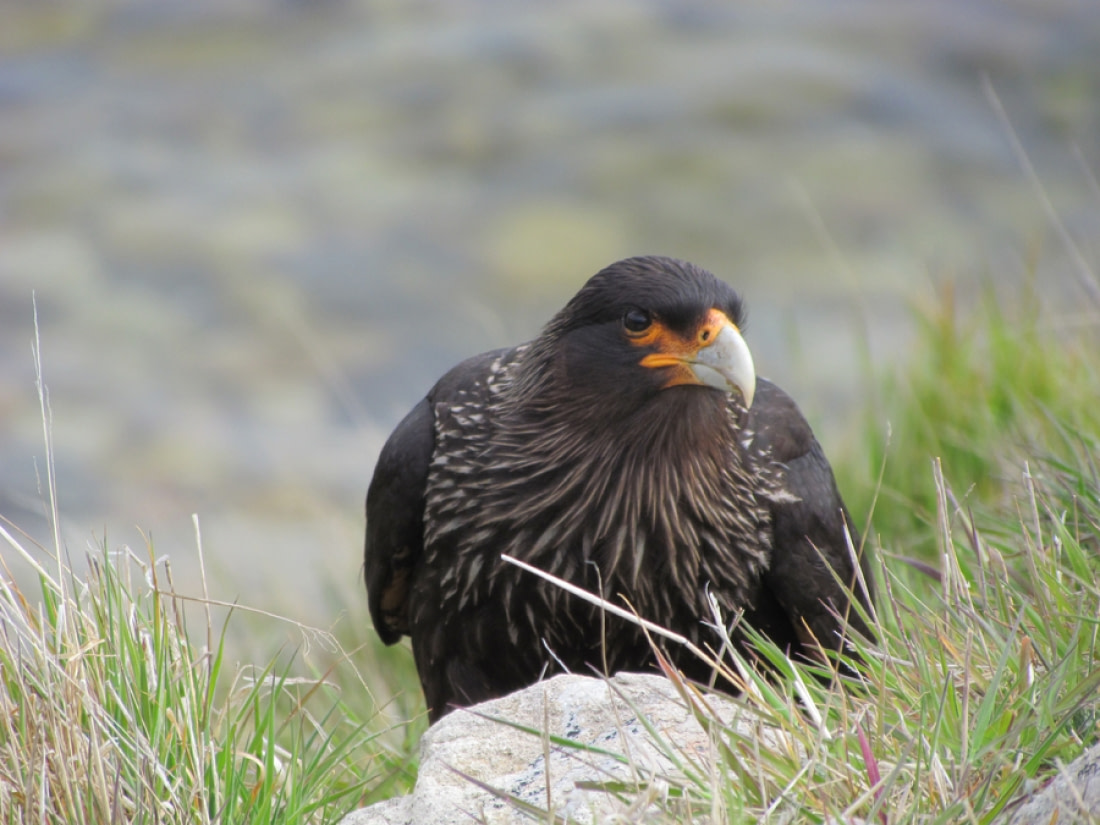
How do Striated Caracaras feed?
Striated Caracaras are opportunistic – they’ll feed on almost anything they can. They’ll eat the young and eggs of seabirds, and hunt smaller seabirds in their burrows or on the wing.
They will investigate human refuse for food and will eat offal. They will scavenge carcasses.
They’re also known for overturning rocks for food which is a sign of higher intelligence in birds – it’s a form of adaptation and problem-solving.
Are Striated Caracaras social?
Striated Caracaras may hunt together in flocks numbering up to 50 individuals.
How fast do Striated Caracaras move?
Striated Caracaras are fast fliers and can reach speeds in excess of 60 km per hour.
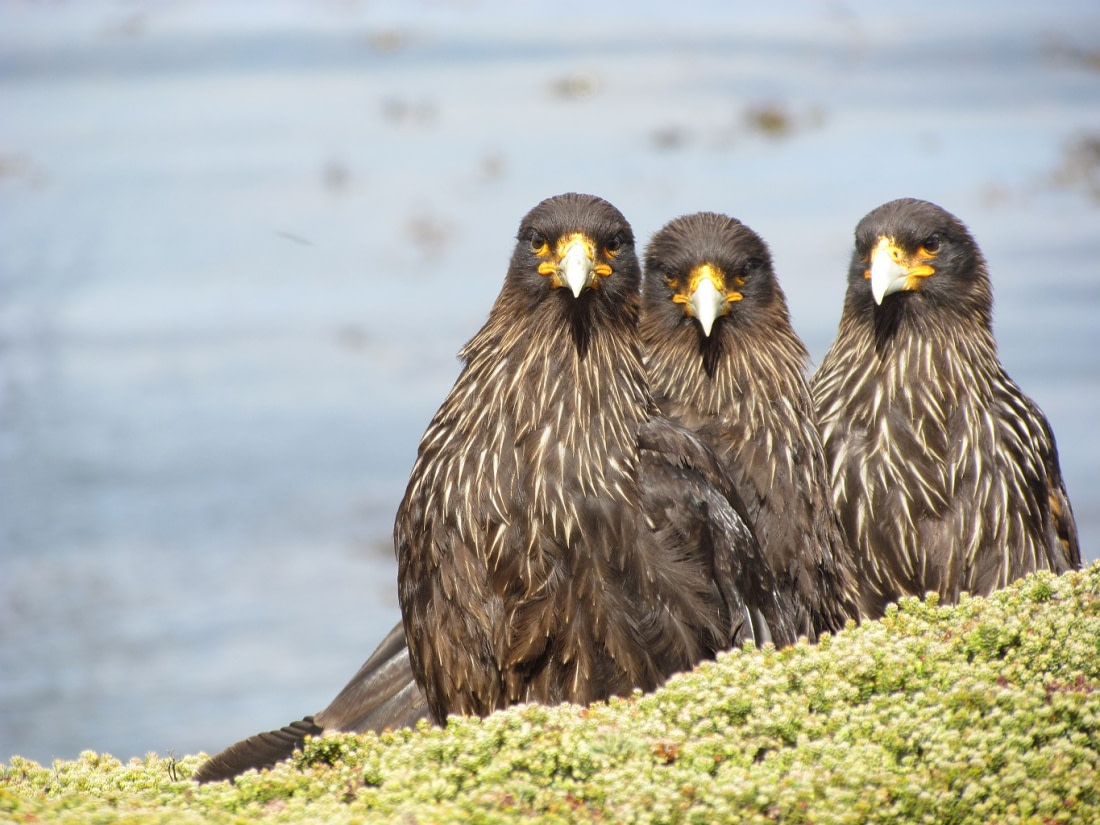
What are Striated Caracara birthing rituals like?
Striated Caracaras build their nests on the ground or on cliff edges. The nests are built of twigs and vegetation, which is thin lined with wool or grass. The breeding season occurs from December through the end of February. The female lays up to four eggs. Incubation takes about a month.
The births are timed to coincide with the birthing season of prey seabirds. This gives the parents easy access to food for their young, and for the young themselves once they leave the nest.
The juveniles’ coverage is brown at first and will take up to 5 years to reach its adult colouring.
How long do Striated Caracaras live?
It’s not known how long Striated Caracaras live in the wild but those raised in captivity can live more than 30 years.
How many Striated Caracaras are there today?
There are approximately 500 breeding pairs of Striated Caracaras found in the Falklands. Overall there may be up to 2500 mature individuals, or up to 4,000 individuals in total.
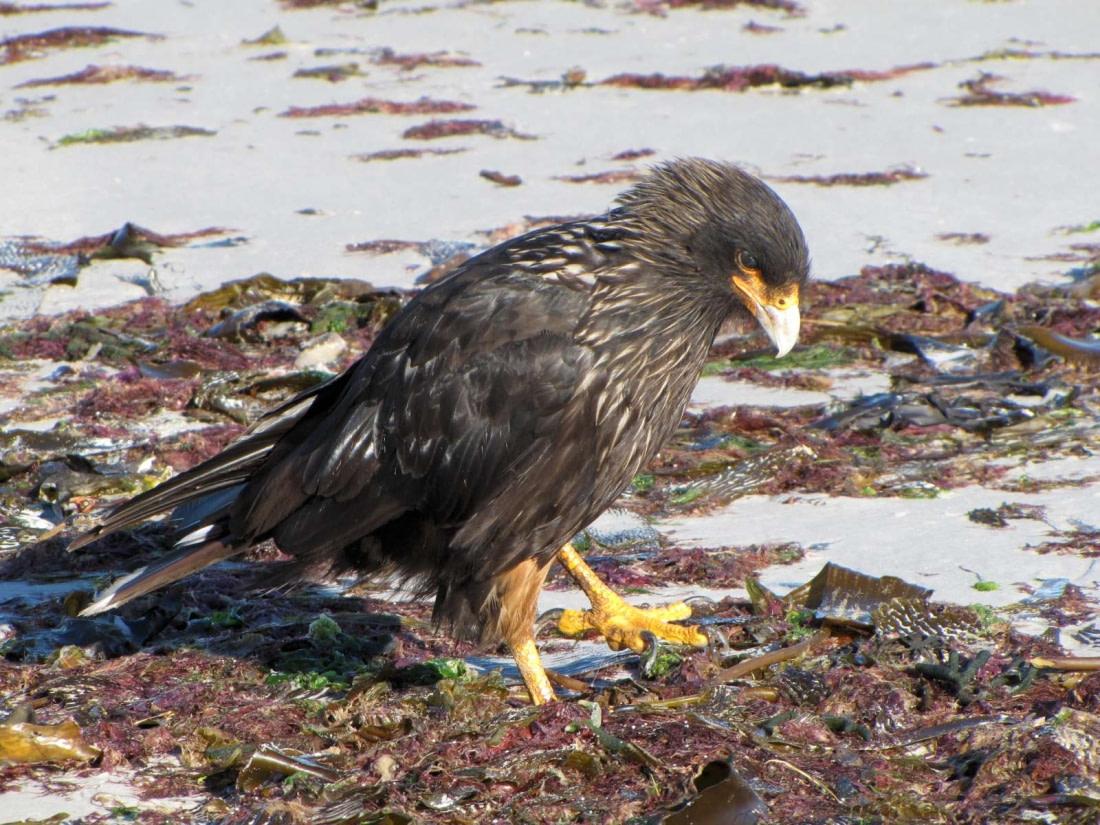
Do Striated Caracaras have any natural predators?
Striated Caracaras do not have any significant natural predators. The biggest threat they have faced is from sheep farmers who began an intensive effort to exterminate them from the Falklands in 1908. Thankfully this decision was reversed in the 1920s, though the population has still not fully recovered to its former levels.
7 Superb Striated Caracara Facts
- They are known to steal red objects like hats of gloves. This might be because the red colouring makes them think the object is meat.
- Striated Caracaras were once intensively hunted in the Falklands because they were such a menace to the local sheep farmers. However they are now protected by law and cannot be killed without permission from the Falklands government.
- Striated Caracaras have the southernmost distribution of birds of prey in the world.
- Striated Caracaras are quite curious and show little fear of humans. Charles Darwin first found that he could catch them with just a hand-net. This curiosity might actually serve an evolutionary trait – it helps them discover new ways to find sources of food.
- Striated Caracaras are the largest of the genus Phalcoboenus.
- Striated Caracaras are only found on islands where there are also populations of seals or seabirds.
- Striated Caracaras are one of the world’s rarest forms of raptor.
